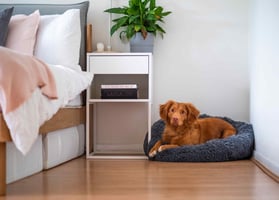Having a puppy can be a wonderful experience, but it can also be quite challenging. One of the most...
Dealing With Puppy Crying in Crate: The Ultimate Guide
Training a puppy can be difficult and stressful. One of the most common issues owners face is puppy crying in the crate. This guide will provide step-by-step instructions on how to deal with puppy crying in crate, so that both you and your pup can stay happy and healthy.
What Causes Puppy Crying in Crate?
Puppy crying in crate can be caused by a variety of different factors. Many times, puppies are simply scared or anxious, and they don't know how to communicate this to their owners. Other times, puppies may be uncomfortable or in pain, or they may need to use the bathroom. It's important to be aware of the potential causes of puppy crying in crate, so that you can take steps to address them.
How to Deal With Puppy Crying in Crate
If you're dealing with puppy crying in crate, here are some tips for helping your pup feel more comfortable and secure:
- Create a Positive Environment: Make sure your pup's crate is comfortable and inviting. Add a soft blanket or pillow, and provide plenty of toys. This will help your pup feel more relaxed and secure.
- Provide Consistency: Establish a consistent routine for your pup. Make sure they have regular potty breaks, meals, and playtimes. This will help them feel more secure and less anxious.
- Keep it Quiet: If your pup is crying, try to keep the environment as quiet as possible. This will help them relax and feel more secure.
- Ignore the Crying: It's important to ignore your pup's crying. If you respond to it, you're reinforcing the behavior and teaching your pup that crying will get them what they want.
- Reward Good Behavior: When your pup is quiet and calm in their crate, reward them with treats and praise. This will help them associate their crate with positive experiences.
When to Seek Professional Help
If your pup's crying in crate persists, it may be time to seek professional help. A certified dog trainer can help you address the underlying issue and develop a plan for helping your pup feel more comfortable and secure. A professional can also provide guidance on how to best use positive reinforcement techniques to reward good behavior and discourage bad behavior.
Conclusion
Puppy crying in crate can be a difficult and stressful situation, but there are steps you can take to help your pup feel more comfortable and secure. Start by creating a positive environment, establishing a consistent routine, and ignoring the crying. You can also reward good behavior with treats and praise. If your pup's crying in crate persists, it may be time to seek professional help.



